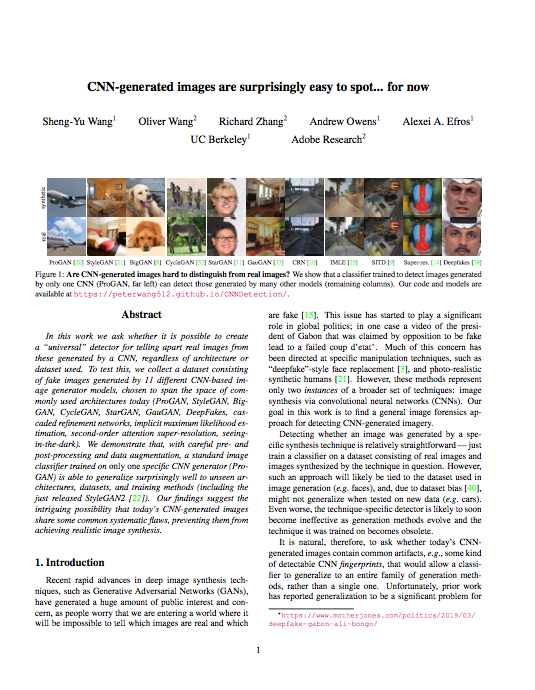Acknowledgements
We'd like to thank Jaakko Lehtinen, Taesung Park, and Jacob (Minyoung) Huh for helpful discussions. We are grateful to Xu Zhang for significant help with comparisons. This work was funded, in part, by DARPA MediFor, an Adobe gift, and a grant from the UC Berkeley Center for Long-Term Cybersecurity. The views, opinions and/or findings expressed are those of the authors and should not be interpreted as representing the official views or policies of the Department of Defense or the U.S. Government.
|


